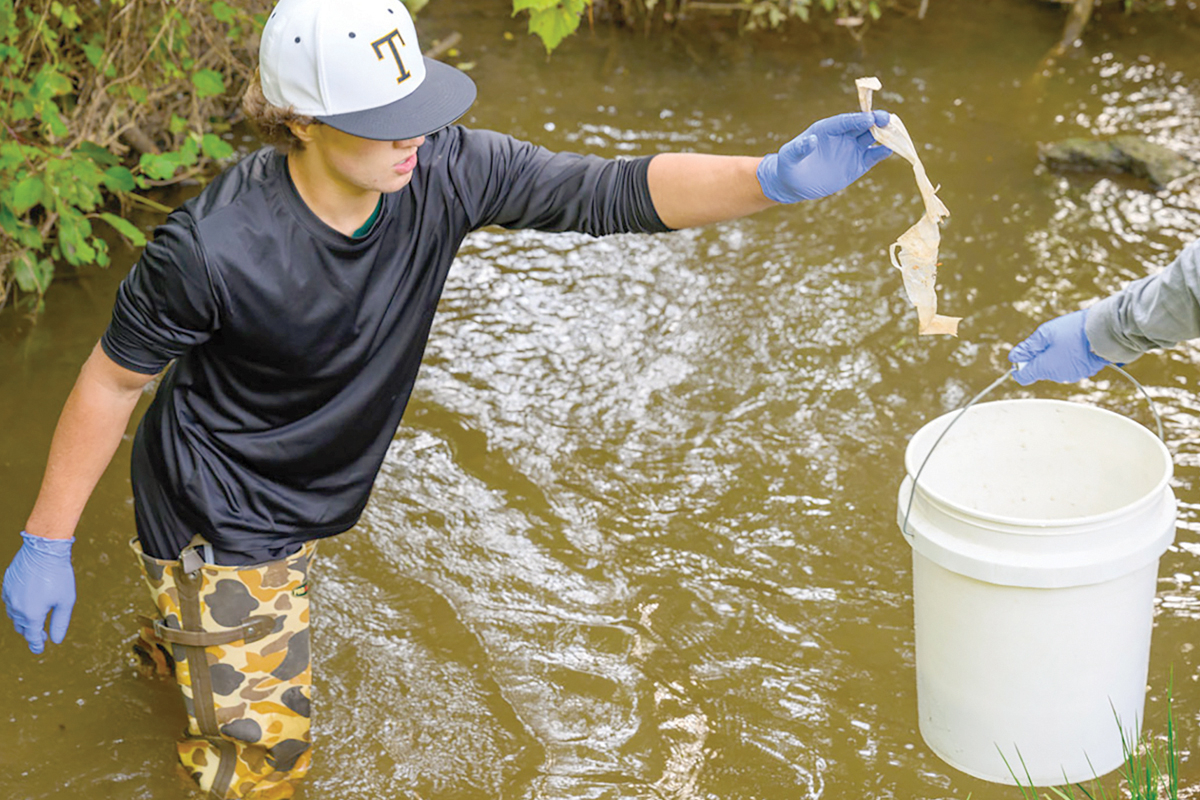Microplastics study confirms atmospheric deposition
 Tuscola High School student August Fama helps collect plastics from Waynesville’s Richland Creek watershed. WCU photo
Tuscola High School student August Fama helps collect plastics from Waynesville’s Richland Creek watershed. WCU photo
A recently completed study on microplastics in Western North Carolina has revealed that even remote headwater streams are impacted, as a large percentage of microplastics in waters tested came from atmospheric deposition.
“We have one site in Waynesville that is almost all Forest Service restricted access with very little human activity,” said Jerry Miller, a professor at Western Carolina University’s Department of Geosciences and Natural Resources. “We detected some of the highest microplastic concentrations up in that area falling out of the atmosphere, and it’s mostly fibers. About 90% are small fibers most likely from clothing, tires, city wear and tear, and of course dust.”
While the study of microplastics and plastic pollution in oceanic and coastal environments dates back to the 1970s, it was not until 2011 that data began to be collected on rivers, lakes and other freshwater systems in North America. Understanding of the issue’s extent and impacts on the health of people, animals and natural systems is still evolving.
The latest research from WCU is a collaboration between Miller, Highlands Biological Station Associate Director Jason Love, WCU Biology Professor Robert Youker, Sue Miller of Tuscola High School and Christine O’Brien of Haywood Waterways Association. The project is funded by the N.C. Sea Grant and the N.C. Water Resources Research Institute.
The study involves determining the concentration of microplastics in the water and picking up trash along certain sections of the Richland Creek watershed in Waynesville.
During the trash pickup part of the study, Tuscola students and other volunteers picked up more than 1,500 pieces of trash along seven 50-meter reaches of Richland Creek. This equates to about two pieces of plastic debris for every linear meter of stream channel.
“About 30% of what they picked up was plastic grocery bags,” Jerry Miller said. “Significant amounts of clothing, food wrappers and Styrofoam cups were found along with some rubber hoses and tires.”





